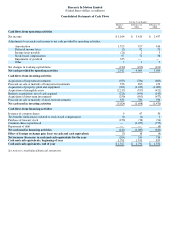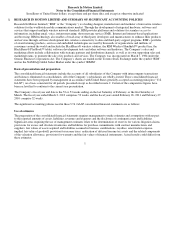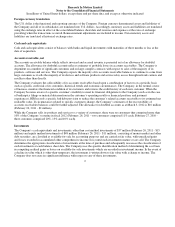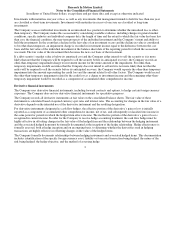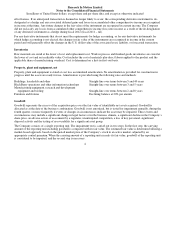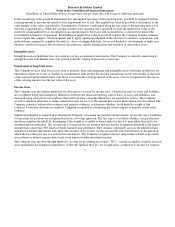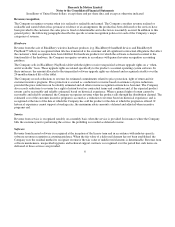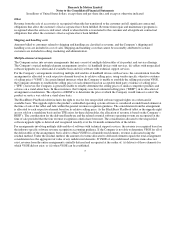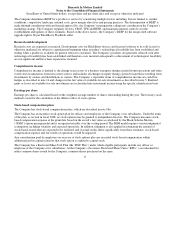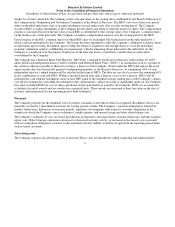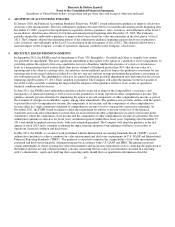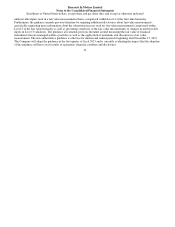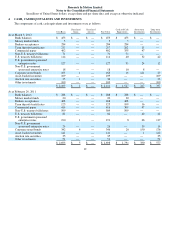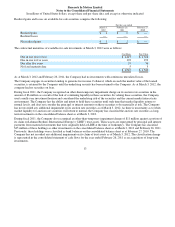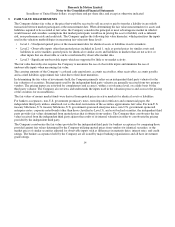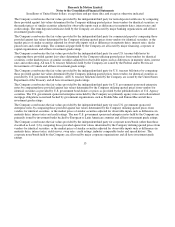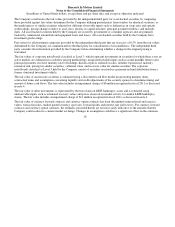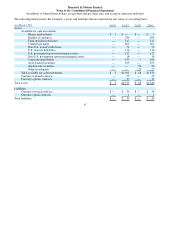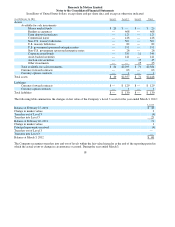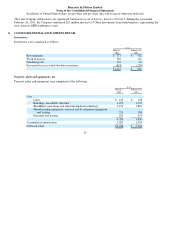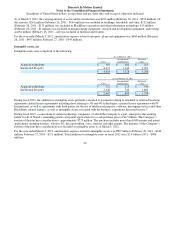Blackberry 2012 Annual Report Download - page 131
Download and view the complete annual report
Please find page 131 of the 2012 Blackberry annual report below. You can navigate through the pages in the report by either clicking on the pages listed below, or by using the keyword search tool below to find specific information within the annual report.
Research In Motion Limited
Notes to the Consolidated Financial Statements
In millions of United States dollars, except share and per share data, and except as otherwise indicated
In January 2010, the Financial Accounting Standards Board (the “FASB”) issued authoritative guidance to improve disclosures
about fair value measurements. This new authoritative guidance became effective for interim and annual periods beginning after
December 15, 2009, except for the requirement to separately disclose purchases, sales, issuances, and settlements in the Level 3
reconciliation, which became effective for interim and annual periods beginning after December 15, 2010. The Company
partially adopted the authoritative guidance to improve disclosures about fair value measurements in the first quarter of fiscal
2011. The Company adopted the remaining portion of the authoritative guidance requiring separate disclosure on purchases,
sales, issuances, and settlements in the Level 3 reconciliation in the first quarter of fiscal 2012. The adoption did not have a
material impact on the Company’s results of operations, financial condition or the Company’s disclosures.
In September 2011, the FASB issued an amendment to Topic 350, Intangibles - Goodwill and Other, to simplify how entities
test goodwill for impairment. The most significant amendment in this update is the option of a qualitative test for impairment, by
providing entities the option to first assess qualitative factors to determine whether the existence of events or circumstances
leads to a determination that it is more likely than not (as defined as likelihood greater than 50%) that the fair value of a
reporting unit is less than its carrying value. An entity has an unconditional option to bypass the qualitative assessment for any
reporting unit in any period and proceed directly to the two step test and may resume performing the qualitative assessment in
any subsequent period. The amendment is effective for annual and interim goodwill impairment tests performed for fiscal years
beginning after December 15, 2011. Early adoption is permitted. The Company will adopt the guidance in the first quarter of
fiscal 2013 and is currently evaluating the impact that the adoption of this guidance will have on its results of operations,
financial condition and disclosures.
In June 2011, the FASB issued authoritative guidance which is expected to improve the comparability, consistency, and
transparency of financial reporting as well as increase the prominence of items reported in other comprehensive income. The
guidance amends previous literature by eliminating the option to present components of other comprehensive income as part of
the statement of changes in stockholders’ equity, among other amendments. The guidance now provides entities with the option
to present the total of comprehensive income, the components of net income, and the components of other comprehensive
income either in a single continuous statement of comprehensive income or in two separate but consecutive statements. In
December 2011, the FASB issued an update to defer the requirement for entities to present on the face of the financial
statements reclassification adjustments for items that are reclassified from other comprehensive income to net income in the
statement(s) where the components of net income and the components of other comprehensive income are presented. The new
authoritative guidance is effective for fiscal years, and interim periods within those fiscal years, beginning after December 15,
2011 and should be applied retrospectively, with early adoption permitted. The Company will adopt the guidance in the first
quarter of fiscal 2013 and is currently evaluating the impact that the adoption of this guidance will have on its results of
operations, financial condition and disclosures.
In May 2011, the FASB, as a result of work performed with the International Accounting Standards Board (“IASB”), issued
authoritative guidance to achieve common fair value measurement and disclosure requirements in U.S. GAAP and International
Financial Reporting Standards (“IFRS”). The guidance is expected to improve the comparability of fair value measurements
presented and disclosed in financial statements prepared in accordance with U.S. GAAP and IFRS. The guidance presents
certain amendments to clarify existing fair value measurements and disclosure requirements such as clarifying the application of
the highest and best use and valuation premise concepts, measuring the fair value of an instrument classified in a reporting
entity’s shareholders’ equity and clarifying that a reporting entity should disclose quantitative information about the
10
2. ADOPTION OF ACCOUNTING POLICIES
3. RECENTLY ISSUED PRONOUNCEMENTS


